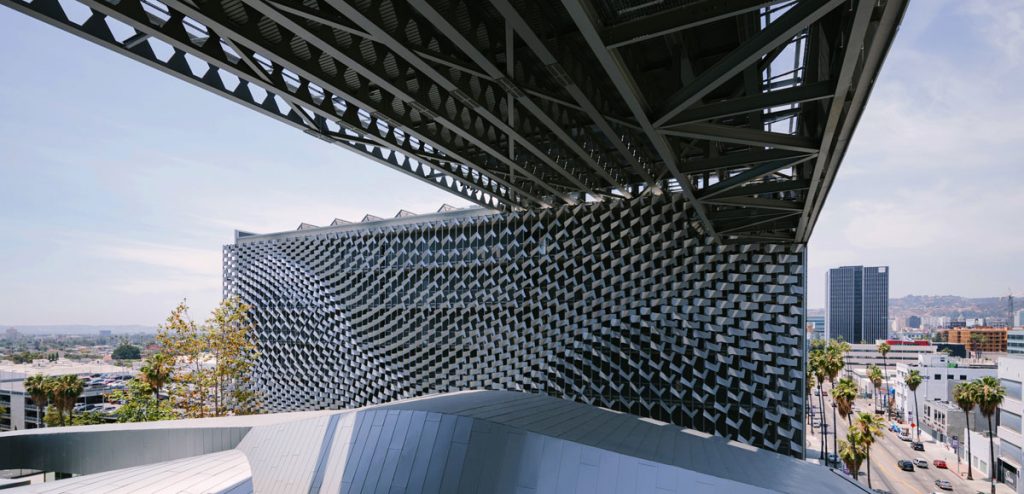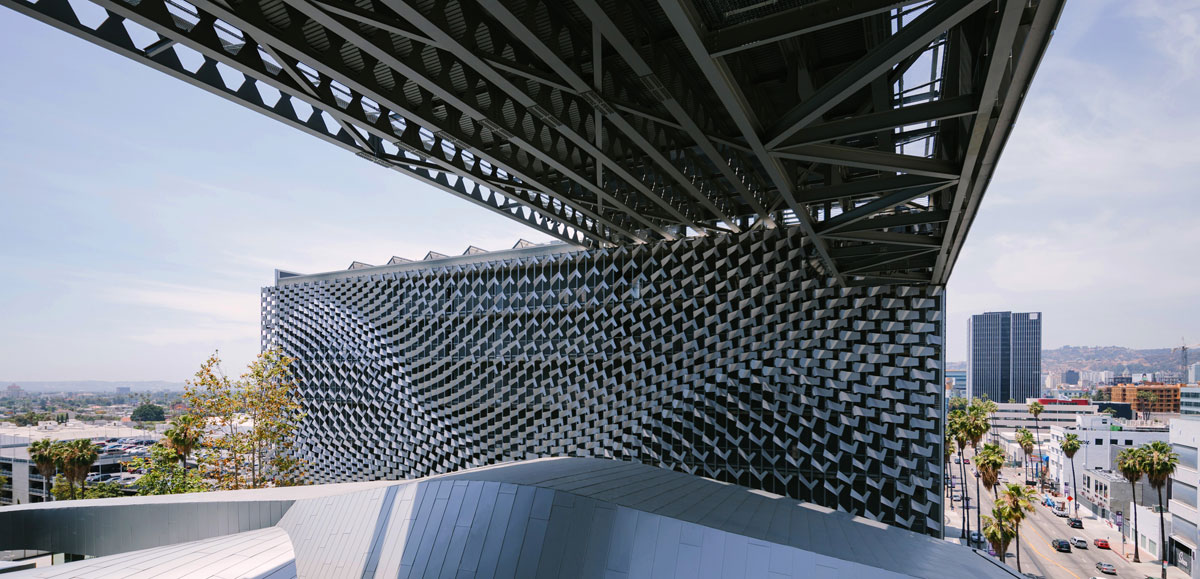
From Grasshopper scripting to smart materials, technology is constantly changing the way architects and designers think about facades. Ahead of the Facades+ Los Angeles conference this month, The Architect’s Newspaper (AN) spoke to three industry leaders: Satoru Sugihara, principal and founder of computational design studio ATLV; Alvin Huang, founder and design principal of Synthesis Design + Architecture; and Doris Sung, principal of DOSU Studio Architecture, about what technology they’re using and how they see technology looking forward.

AN: What technology—be it CAD or physical elements—is most relevant to facades today and how do you see this technology shaping the future?
Satoru Sugihara: I think the progress of computation technology and the availability of diverse software, plug-ins and coding platforms coming from both companies and open source communities are giving us more creative opportunities to define design problems and frameworks of design processes unique to projects and designers and then solve them with the assistance of computation.
When more computation technology and design automation software are developed in the future including AI technology, if we blindly use them, the range of designs would converge into similar results due to the tendency and underlying design frameworks each software innately has.
But if we are aware of the nature of technology and take the initiative to define design frameworks, design processes and design methods, and then choose a combination of software or develop our own software to be inserted in the design processes, our design outcome could be more diverse and rich, broadening the range of possibility of architecture. I think we should keep taking the role of asking questions and then use the assistance of technology to find answers.

Alvin Huang: I believe that the most powerful technological advance for design has been the advent of visual programming—I’m a designer, not a programmer—so visual programming is a way for me to really think diagrammatically about the geometric relationships that we are working with and being able to understand the inputs and outputs of systematic thinking.
This type of thinking when is super powerful when paired with digital fabrication and the ability to go from “file to factory”.
However, I think the fundamental shift that is happening right now is what I would call a shift to the “post-digital”. We’re moving into an era when the fact that we work digitally is now a given, not a novelty nor an objective. It is a fundamental fact about the way that we work, so we no longer need it to define the way we work. At first, the appearance of these tools within the design world was really as tools and nothing more – CAD was a way of automating existing methods of production for speed and precision. Then we began working with them as techniques – the methods of working that the tools provided allowed a maneuverability for certain things to be modeled or drawn that could not have been done without them. I think what is important in our work is how tool and technique are now driving a new intuition – one that is informed by a sense of craft with how to work with these tools and techniques to achieve desired design outcomes. We are learning how to think with these tools.

Another topic of Huang’s, “Skin as Associative Geometry” will use The Groove at CentralWorld in Bangkok and the Central Plaza in Lampang as examples. (Courtesy Alvin Huang)
Doris, you’re a professor at the University of Southern California and researching smart material use in facades. What is your take on this?
Doris Sung: I believe the most relevant technology for performative facades today are the use of smart materials and assemblies that are responsive, especially the ones that require zero energy and need no computer controls (i.e. no microchips). That doesn’t exclude the interesting progress in artificial intelligence research. It simply means that we can use smart materials and other wireless actuating systems to make intelligent systems so much more useful if we use them smartly. In many ways, it is a dumbed-down, low-tech answer to the basic problems of sustainable design.
What technology do you currently use with respect to facade design work?
Satoru Sugihara: I use scripting (on Processing with iGeo library and Grasshopper with Python add-on) designing and developing project-specific algorithms to implement problem solver, optimizer, or design exploration with generative and emergent algorithms.
Doris Sung: Using computation in the design process, I geometrically program smart materials such as thermobimetal to react in specific ways to changes in temperature. Using solar radiation and other sources of heat, I design facades to self-shade, self-ventilate, and in some cases self-assemble. By combining the sensing and actuating response of the smart material, all movement is compressed into one step. The resulting activity is both performative and phenomenal.

Alvin Huang: The central agenda at the core of my work explores the evolution of design computation from technology to technique to techné – utilizing emergent technologies as more than production tools or instruments of generation, but more importantly as an added dimension of design experimentation, design intuition, and design thinking. Through the combination of associative geometries (Grasshopper 3D), physics-based solvers (Kangaroo), environmental analysis tools (Ladybug and DIVA), and digital fabrication protocols, I seek to develop methods to inform architectural form with performative traits through the iterative manipulation of data-driven geometries. By positioning design & fabrication technologies as ways of thinking the work extends the historical legacy of technology as a catalyst for disciplinary advancement.
